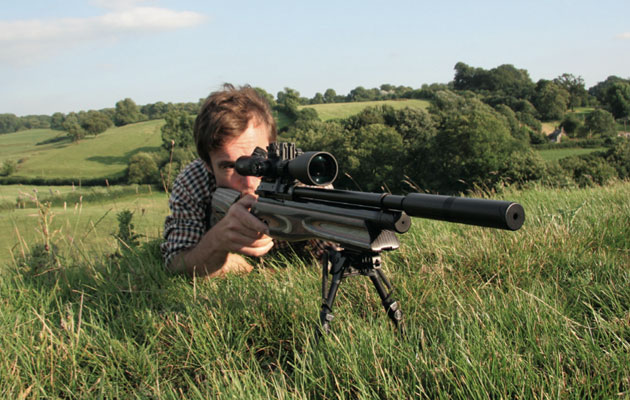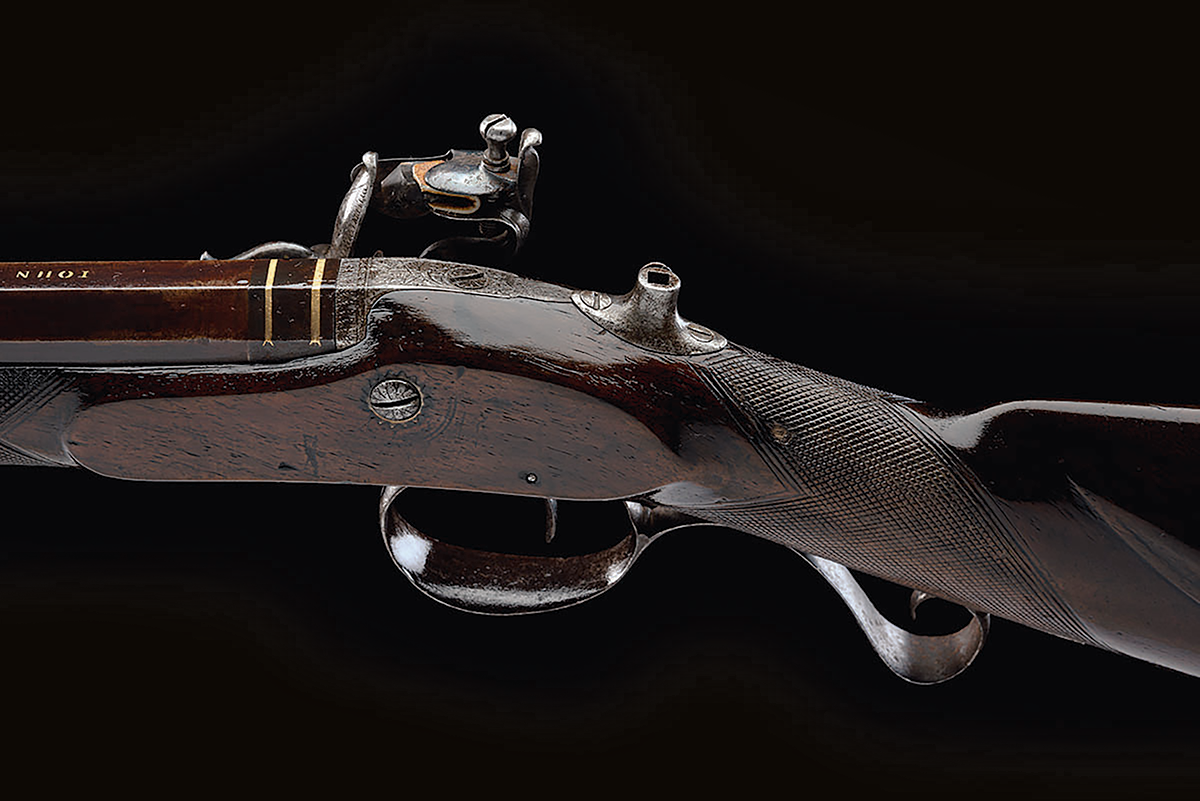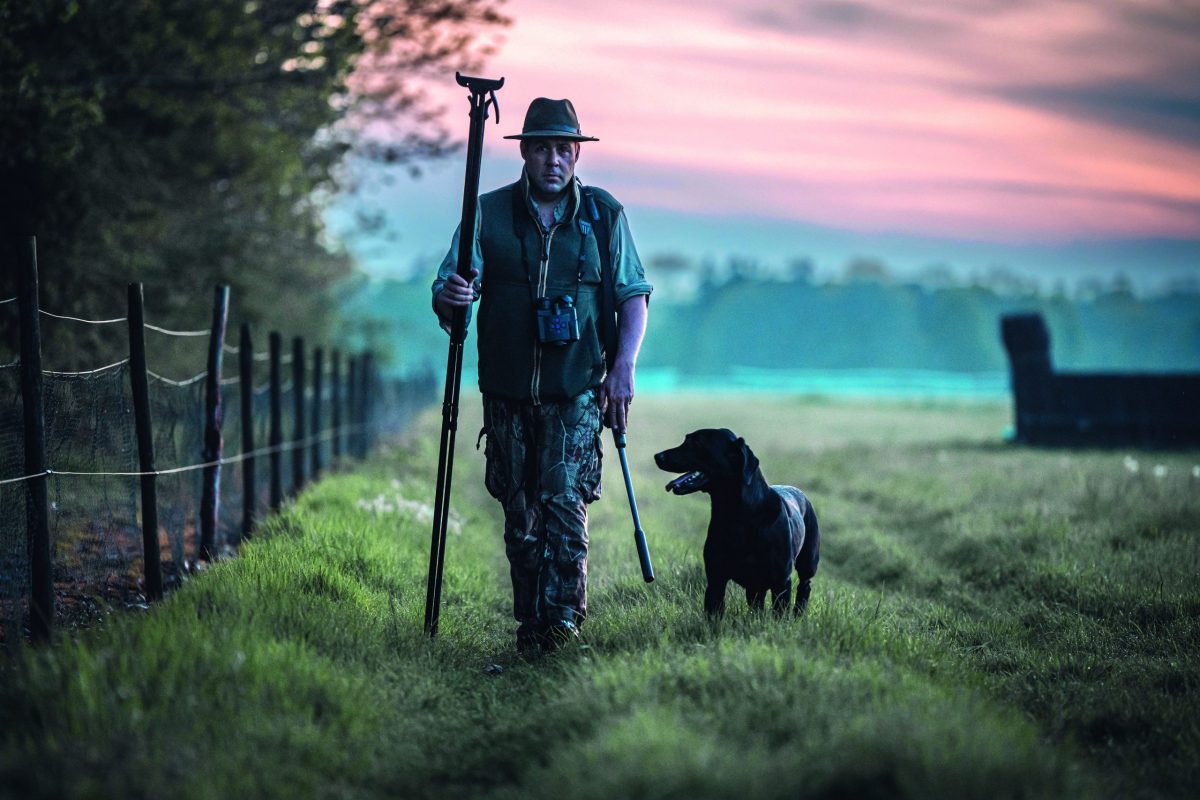Reaping a rabbit harvest
With the combines and the crops gone, now’s the time to grab your airgun, explains Mat Manning.

Our contributor Matt Manning out rabbit shooting
Harvest time is perfect for targeting rabbits with an air rifle. Not only is it a lovely time simply to be out walking the fields, it can also bring just the right conditions for bagging a few bunnies.
There have been a lot of rabbits on my ground this summer, but the shooting has been tricky. Corn crops and waist-high grass have made it difficult to access some fields without causing damage, and the consequent cover means it has been almost impossible to spot rabbits anyway.
But things have changed now. Many cereal crops have been harvested, and silage and hay fields have been cut. Even fields where sheep and cattle are kept are more closely cropped after a summer of persistent grazing — and the shortening days mean the regrowth is slow to return.
This reduced cover is good news for rabbit shooters, because it makes it much easier to spot quarry. Furthermore, rabbits that live in fields where standing crops have recently been harvested are often less wary than those accustomed to living on open ground. This is because the bunnies will have got used to going about their business where tall grass or corn stems kept them hidden from prying eyes. With the cover suddenly gone, it can sometimes take them a few days to realise that they’re now exposed to danger, and I’ve had some very productive sessions stalking the hedgerows around fields after the combines have rolled off.
Evening sessions are usually best. I like to be in the fields during the last couple of hours of daylight — just as the rabbits are venturing out for their sunset binge. That’s another great thing about this time of year; the shortening days mean you can shoot through to dusk and still be home at a civilised hour, unlike in midsummer when evening sessions can often stretch out until well after 10pm.
Minimal equipment
I don’t usually set out with a fixed plan in mind because I like this sort of shooting to be a fairly relaxed affair. Equipment is kept to a bare minimum for a mobile approach, comprising just airgun, ammunition and a pocket knife for paunching and hocking shot rabbits. If I remember, I also slip a compact rangefinder into my pocket, so I can quickly work out suitable hold-over and hold-under when shots are presented. The trajectory of a pellet fired from a legal limit (sub-12ft/lb) air rifle has a fairly pronounced curve — even out to our maximum range of around 40m — so it’s important to know exactly where to aim to ensure clean kills.
If you work out the rise and fall of the pellet on paper targets and how it corresponds with the reticule on your scope, you can apply it in the field. A laser rangefinder makes for fast and accurate calculation of range but it’s useful to be able to do it by eye. I always pace out the distance to shot quarry when I walk in to make the retrieve. This helps to reinforce my ability to estimate range when a similar target crops up, which is helpful if I forget my rangefinder.
Calibre selection is a matter of personal choice — lighter .177 pellets fly fast and flat but .22s tend to have greater knockdown power. Both popular calibres, and the intermediate .20, will kill rabbits cleanly with a strike between the eye and ear. The important thing is being able to land them in exactly the right place, so keep practising and shoot within your own limitations.
Clothing can be kept as basic as your equipment for harvest-time rabbit shooting. Rabbits don’t have tremendously good eyesight, so it’s unlikely that you’ll need to wear full camouflage and a headnet unless your ground is devoid of natural cover, or if the rabbits are particularly skittish after protracted shooting pressure. By and large, drab colours should be enough to keep you from spooking rabbits as you drift around the fields.
Scent and sound are the important considerations, because what rabbits lack in eyesight, they more than make up for with their nostrils and ears. Avoid anything that could create a suspicious smell, such as strong aftershave and cigarette smoke, and do your best to approach your quarry from downwind, so that your scent is carried away from it. Wear clothes that allow you to move quietly, and avoid anything that either rustles or has jangling zips and poppers if you can. Try not to wear heavy boots unless the ground is really wet; you need to be able to tread lightly if you want to creep within airgun range of rabbits.
You will sometimes encounter areas where the rabbits are prolific — the sort of place where half a dozen or more rabbits dash for cover at the sound of your shot, and hopefully not at the sound of your approach. It often pays to linger around these spots, rather than just bagging a single bunny and wandering on, because rabbits will soon venture back out when they think the danger has passed.
Find a shady place where you can sit downwind from the burrow or, if you’ve got a bipod, sprawl out on your belly and enjoy the opportunity to take some rock-steady shots. That’s another handy thing about shooting over recently harvested or grazed fields — the lack of high cover means you can use a bipod without shots being obscured by tall stems.
Though this sort of shooting is unlikely to yield huge bags — certainly not the sort of tally you’d notch up if you waited until an hour or two after dark and headed out with a lamp or night vision kit — it makes for a satisfying time in the field while reducing numbers of this agricultural pest. Furthermore, harvest rabbits usually make good eating. Three-quarters grown and fattened-up on a summer of rich pickings, they are great for the pot.
Mat’s tips for rabbiting at harvest time:
- Head out just before sunset – rabbits often venture out to feed as the light fades
- Understand pellet trajectory, range estimation and aiming points – it’s essential for accurate shot placement
- Wear “quiet” clothing and tread lightly to avoid being detected by sharp-eared rabbits
- Use a bipod if you can – the lack of cover means you should be able to shoot prone without obstructions
- Make the most of it – harvest is a short and productive season, and a great time to be out with a gun







